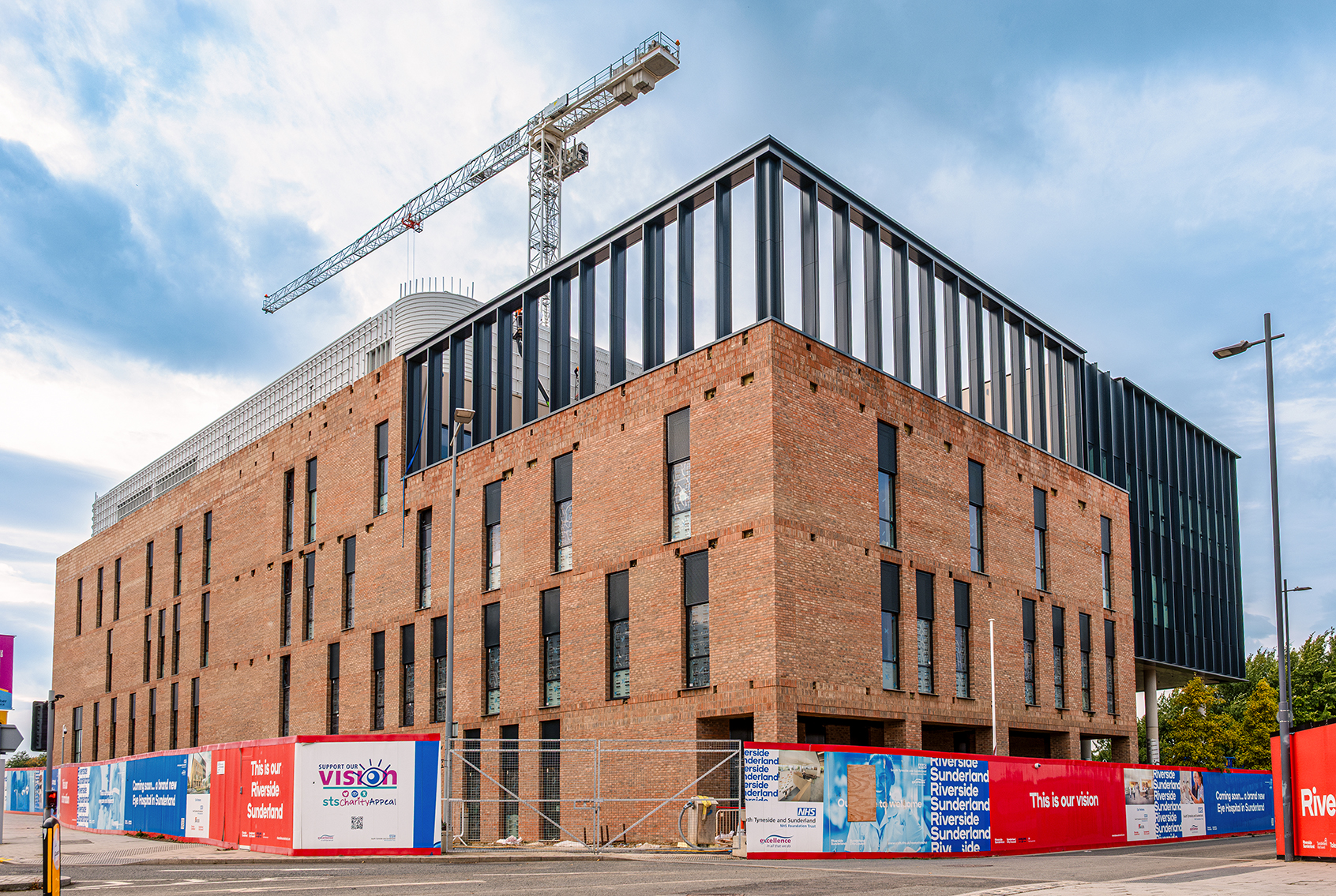Published on: 6 October 2025
With just nine months to go until the region’s new Eye Hospital opens its doors in Sunderland, patients can now get the first glimpse of where they will be coming for their specialist eye treatment from next summer.
All scaffolding has now been removed from the exterior of the building, revealing in full the striking architecture of the new Eye Hospital in Sunderland city centre. It marks a major milestone in the project’s progress.
The scaffolding is not the only thing coming down as healthcare leaders continue to make great strides in reducing waiting times for patients needing eye care.
The latest NHS data published for July 2025 shows South Tyneside and Sunderland NHS Foundation Trust is the best performing across the whole of the North East and North Cumbria when it comes to fast access to eye services.
81% of people using the Trust’s eye services are now being seen within 18 weeks of referral by their GP or Optometrist, with an average waiting time of just 8 weeks for treatment. This compares to the national average of 70% of patients being seen within 18 weeks and an average wait of 10 weeks.
Healthcare leaders in charge of the region’s specialist Eye Hospital still want to go much further to make sure people are seen quickly for their NHS eye care.
Dr Ajay Kotagiri is Clinical Director of Ophthalmology Services at South Tyneside and Sunderland NHS Foundation Trust. He said:
“The removal of scaffolding is a hugely exciting moment for everyone involved in the project and especially our staff. It’s the first time you can see the hospital’s design from the street and it is very impressive.
“We’re so proud of the exceptional eye care we already provide in Sunderland, but we’re looking forward to having the facility to match. All our staff are working incredibly hard to give people fast access to our eye services, and this will remain a core focus for us over the next nine months as we prepare to move to the new site.”

The region’s new Eye Hospital will house the Trust’s leading Cataract Treatment Centre which is one of the biggest services of its kind in the country. It carries out up to 7,000 cataract operations a year using the current two theatres at Sunderland Eye Infirmary. With a third theatre being added to the new facility, this provides the opportunity to speed up access to care even further.
Other key features of the new three-story Eye Hospital include:
- A 24/7 Emergency Department for eye injuries and emergencies
- A Retina Unit for macular conditions
- A Surgical Day Unit
- Imaging Hub and Outpatients Department
- Children’s Outpatient facilities
- Operating theatres
Part of the wider Riverside Sunderland development, the new Eye Hospital has been designed to reflect a modern and welcoming healthcare environment. It will replace the current Sunderland Eye Infirmary on Queen Alexandra Road.
Councillor Kevin Johnston, portfolio holder for Housing, Regeneration and Business at Sunderland City Council, said:
“The landscape is totally transforming at Riverside Sunderland. Every day, as people visit, they will see developments closing in on completion, that are breathing new life into Sunderland’s city centre.”
Appointed by Sunderland City Council, contractor Kier will now shift focus to the hospital’s internal fit-out. Progress is already evident inside, with vibrant colours brightening the Emergency Department, flooring being laid on the ground and first floors, and the structure for the impressive open staircase being installed.
In the coming months, work will continue internal finishes, cycle storage, and the completion of the adjacent park. These developments will further enhance the hospital’s welcoming environment for patients, staff, and visitors.
To support the Trust’s ambition to remain at the forefront of innovation in eye care, its STS Charity has launched the ‘Vision Appeal’. This is a campaign to raise £1 million for cutting-edge equipment and technology beyond the core build.
This includes ocular motility analysers, advanced visual field-testing equipment, and motorised adjustable examination chairs. These technologies ensure patients benefit from the very latest in diagnostic and treatment capabilities.
Set to welcome its first patients in summer 2026, the facility remains on track for completion in spring next year.







